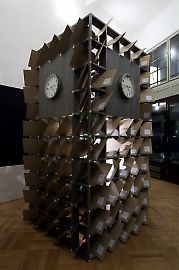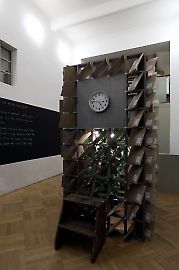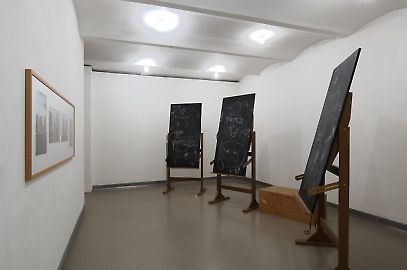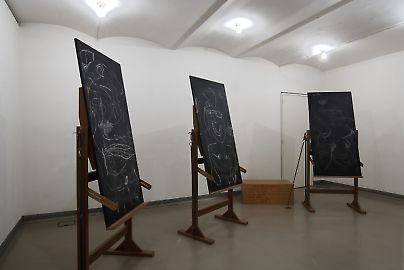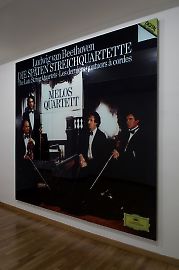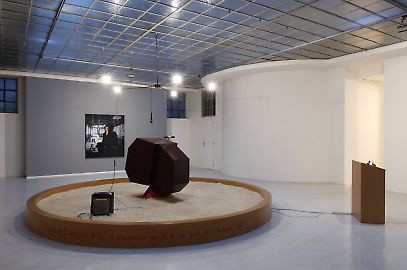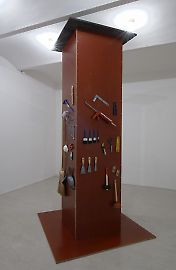Clegg & Guttmann --
Variants of Aesthetic Collectivism
(i) In the aesthetic domain, individualism and collectivism stand for competing theories of artistic reception. The former view emphasizes the primacy of the experience of the single viewers, confronted with a work of art, whereas the latter, the manner in which they are constituted by it as parts of an aesthetic collective. For the aesthetic collectivist, you always experience art together with others; for the individualist, the art viewer is essentially alone.
Individualism is, of course, the more common sense view; all experience resides, after all, in the heads of single human beings. Collectivism points to the fact that an important aspect of the issue is ignored - that the sense of togetherness generated by common aesthetic experience is not an incidental phenomenon but part and parcel of the aims of all art, whether one experiences it in a concert hall, a cinema or a museum. Genuine art, as Kant reminded us, is not concerned with mere subjective gratification; art must always appeal to the viewer’s sensus communis and the development of sensus communis requires the experience of art.
(ii) The present exhibition of Clegg & Guttmann is conceived of as an essay on various concrete forms of aesthetic collectivism found in their recent works of art.
i. In „What can be expressed and what is always left out from the description“ the issue of aesthetic collectivism appears in a most transparent way. When the individual viewers contribute intellectual labor, drawing the different parts of the tree as it appears to them at various points of time, they are thereby engaged in a communal aesthetic project.
ii. „Constraint drawing“ is also clearly centered on the topic of multi participant action albeit in a somewhat different way. One could even say that the artwork is, essentially, a devise for collective creativity. Because the movements of the „model“ and the three „draftsmen“ who are included in the piece are mutually constrained and the drawings that result represent the sum total of the actions of a genuine aesthetic collective.
iii. „Our production/ the production of others“ is relevant to the present concerns because it is the terminal point of a sequence of events involving the photographers (Clegg & Guttmann) and their subjects (Melos Quartet). Clegg & Guttmann were asked to photograph the musicians. The photograph was used for a record cover of the late Beethoven string quartets. Finally Clegg & Guttmann „re-appropriated” the record cover image, re-photographing it and presenting it as their own work.
iv. “Cardinal Red” was made as a collaboration of Clegg & Guttmann and Franz Erhardt Walther – a work of art authored by, both, the photographers and their subjects. In so far as we see Franz Erhardt Walther demonstrating how to use the different parts of one of his works for a performance of sorts, the photograph is inherently concerned with his ideas. On the other hand, the work is also a portrait that employs various art historical conventions; in that regard, it is thoroughly consistent with the concerns of Clegg & Guttmann’s works.
v. „Rus in Urbis“ is an installation, which explicitly requires a collective aesthetic reception; the viewers are requested to syncopate with their dance movements to the beat generated by a mechanical bull.
vi. Finally, „The open Tool-Shelter of Toronto“ shows how the work of art can expands its influence beyond aesthetic concerns. Being a mechanism for recycling and sharing various work tools, the work aims to generate in its social surrounding an enhanced sense of a community.
To sum up, none of the works included in the show realizes an idea, which appeared, first, in the mind of a single creator. Most required a collaboration of a number of distinct individuals. All are open works, which must be completed by the viewers. Each in its own manner articulates a way in which the work of art casts the single viewer as a part of an aesthetically-generated collective which it helps create and sustain.


